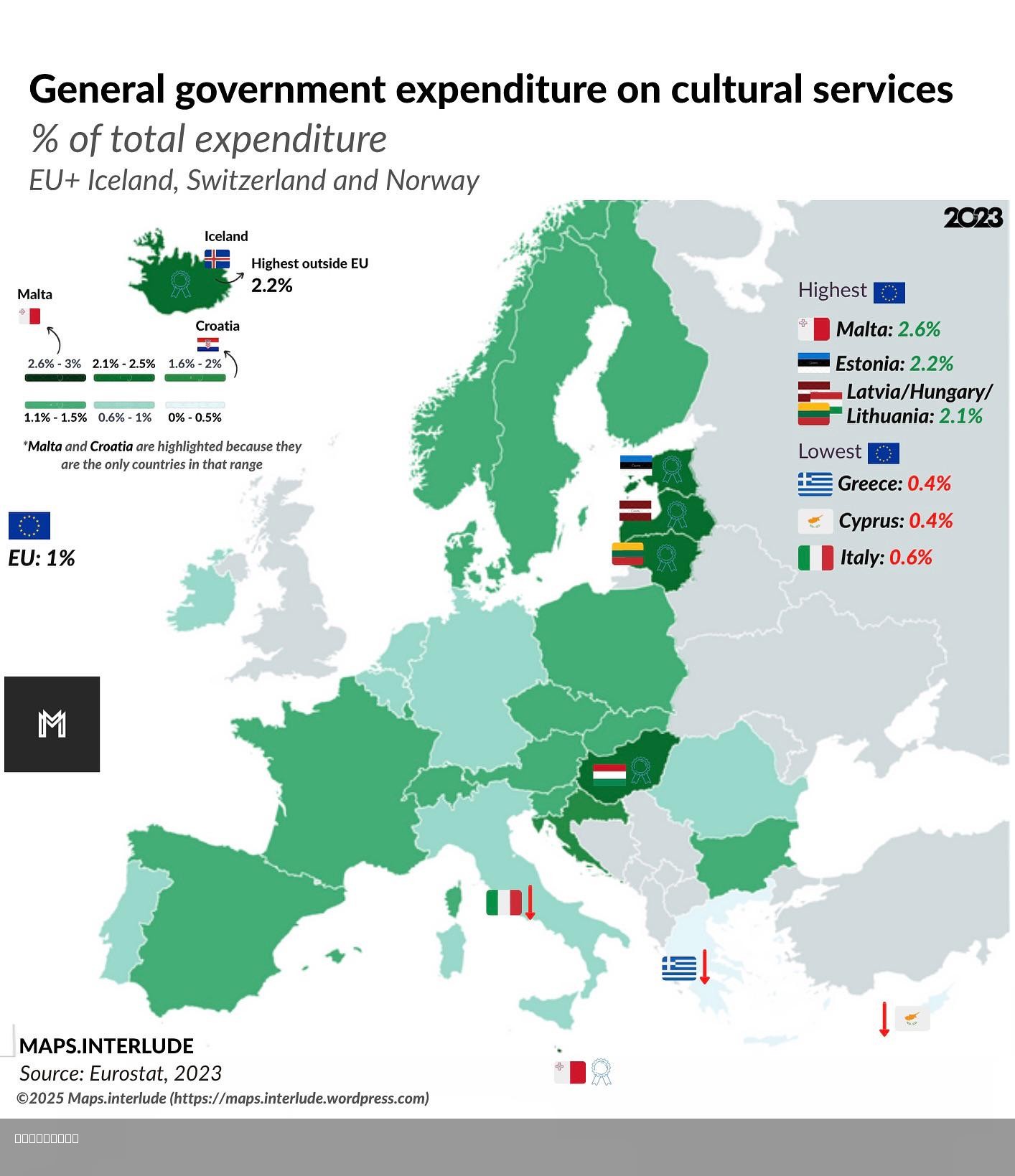General Government Expenditure on Cultural Services Map


Alex Cartwright
Senior Cartographer & GIS Specialist
Alex Cartwright is a renowned cartographer and geographic information systems specialist with over 15 years of experience in spatial analysis and data...
Geographic Analysis
What This Map Shows
The "General Government Expenditure on Cultural Services" map displays how different governments allocate financial resources towards cultural initiatives, including arts, heritage, libraries, and other cultural activities. This visualization provides a clear depiction of the varying levels of investment made by governments across different regions, highlighting where public funding for culture is prioritized and how it differs nationally and internationally.
Deep Dive into Government Expenditure on Cultural Services
Cultural services play a vital role in societies, enriching communities and contributing to social cohesion and identity. Government expenditure on these services reflects the value placed on culture within a nation or region. But what exactly does this expenditure include? Generally, it encompasses funding for museums, galleries, theaters, cultural festivals, and educational programs related to the arts. Interestingly, this investment is not merely about supporting the arts; it also encompasses the preservation of cultural heritage, which can enhance tourism and local economies.
According to recent data, countries like Sweden and France lead in their per capita expenditure on cultural services, allocating significant portions of their budgets to ensure cultural accessibility for their citizens. For instance, Sweden's commitment to cultural services averages around 0.9% of its GDP, demonstrating a robust recognition of the arts as a public good. On the contrary, countries with lower expenditures, such as the United States, may allocate only 0.3% of their GDP to cultural services, which raises questions about the sustainability and accessibility of arts and culture in those regions.
What's fascinating is the impact that these expenditures can have on social development. Numerous studies indicate that investment in cultural services not only boosts the economy by creating jobs but also enhances educational outcomes and fosters community engagement. Have you noticed that cities with vibrant cultural scenes often experience lower crime rates and higher rates of civic participation? This correlation suggests that cultural investment can lead to broader social benefits.
Moreover, the ongoing global challenges, such as the COVID-19 pandemic, have significantly affected cultural funding. Governments worldwide were faced with tough decisions regarding budget allocations, and unfortunately, many cultural sectors suffered cuts. However, some governments have recognized the critical role of culture in recovery and resilience, leading to innovative funding solutions and support for the arts that may shape future expenditures.
Regional Analysis
When examining the map regionally, it's clear that Europe leads in government expenditure on cultural services. Countries like Austria and Germany not only prioritize cultural funding but also boast a rich cultural heritage that enhances tourism. For example, Austria's investment in the arts is not just about supporting local artists; it fosters an environment where culture thrives, attracting millions of tourists each year to its historic sites and cultural events.
In contrast, regions such as Eastern Europe exhibit lower average expenditures. Countries like Bulgaria and Romania, while rich in culture, often struggle with limited budgets for cultural services, which can hinder the preservation of their rich heritage. For instance, Romania's investment in cultural services is below the EU average, leading to concerns about the sustainability of their cultural institutions.
Meanwhile, in North America, the disparity in cultural funding is stark. The United States, with its vast cultural landscape, often relies heavily on private funding rather than public investment. This model can lead to inequalities in access to cultural services, particularly in underprivileged communities. Conversely, Canada has a more balanced approach, with government initiatives supporting cultural programs that aim to bridge these gaps.
Significance and Impact
Understanding government expenditure on cultural services is crucial for several reasons. Firstly, it reflects societal values and priorities. A government that invests in culture signals its commitment to fostering a well-rounded, educated populace. This investment not only enriches lives but also builds a sense of community and identity.
Moreover, as cultural sectors face challenges like economic downturns and shifts in population demographics, the need for sustained investment becomes more apparent. Looking forward, trends suggest that governments may adopt more integrated approaches to cultural funding, recognizing its interconnectedness with education, tourism, and urban development. Interestingly, as cities evolve and become more diverse, the demand for inclusive cultural services is likely to rise, pushing governments to rethink their funding strategies.
In conclusion, the "General Government Expenditure on Cultural Services" map provides a valuable insight into how different regions prioritize culture through public funding. As we navigate the complexities of a changing world, understanding these expenditures can help us advocate for the importance of culture in society and ensure that future generations continue to benefit from rich cultural experiences.
Visualization Details
- Published
- August 3, 2025
- Views
- 110
Comments
Loading comments...